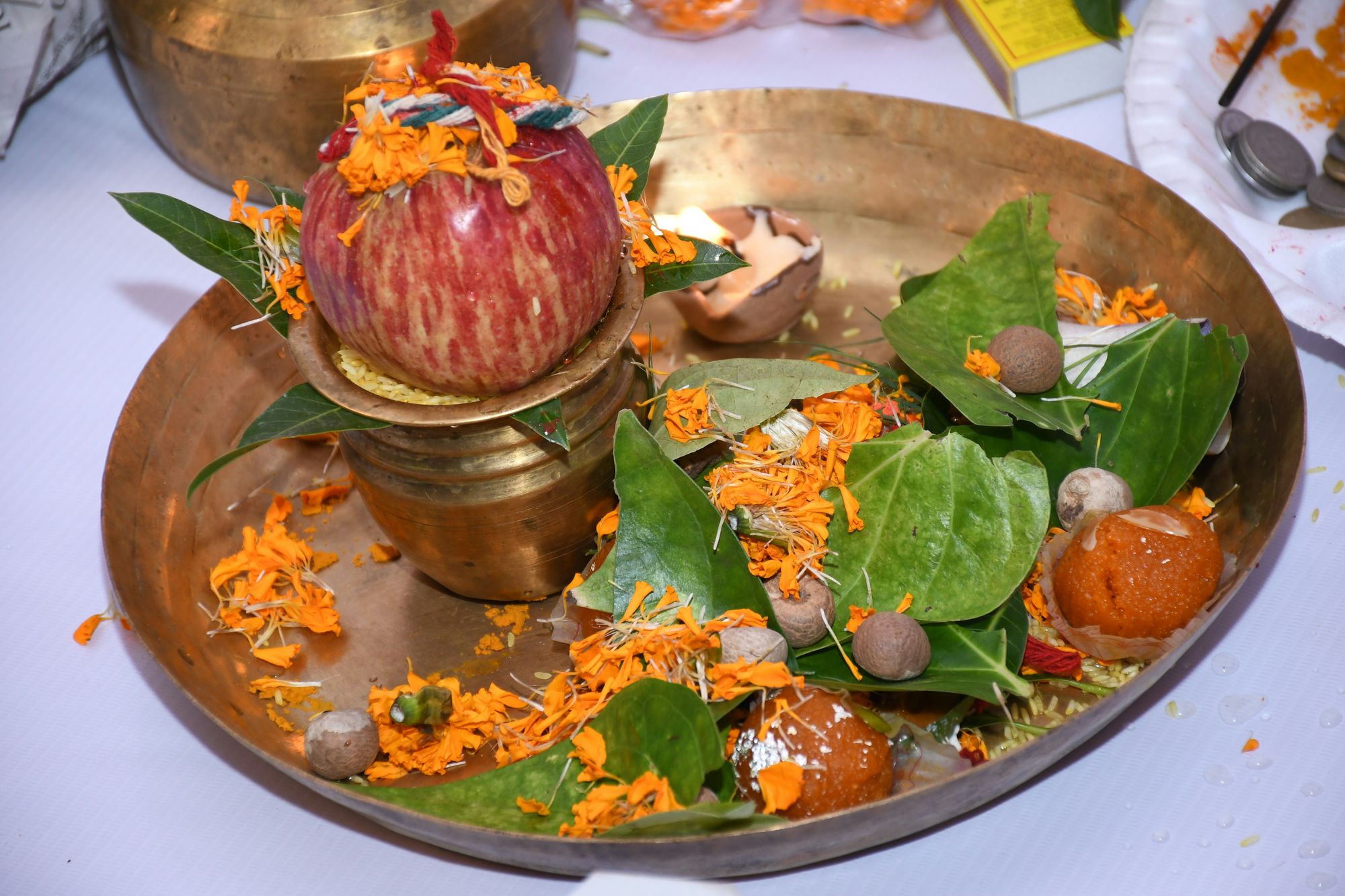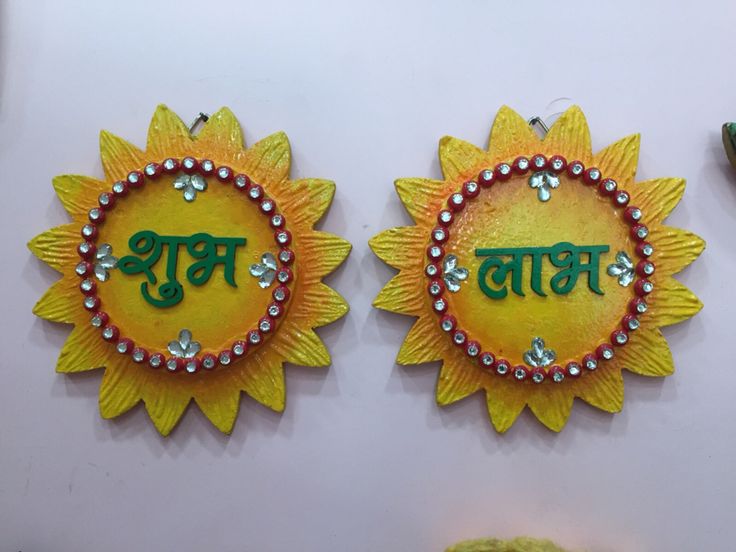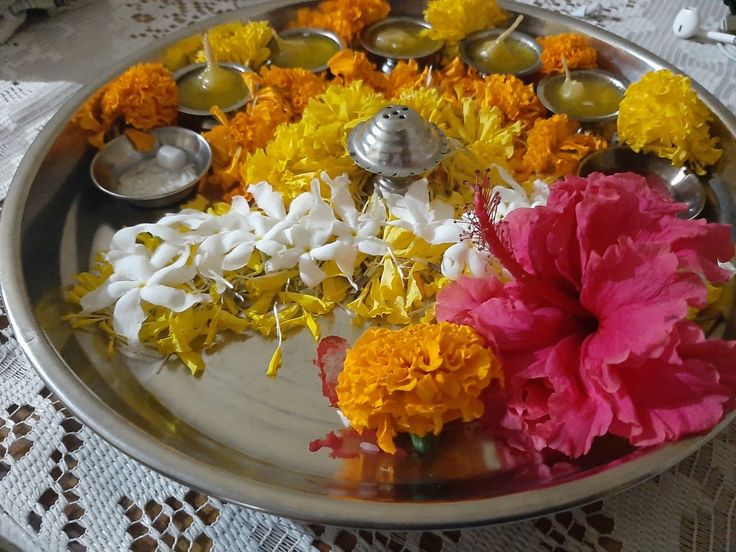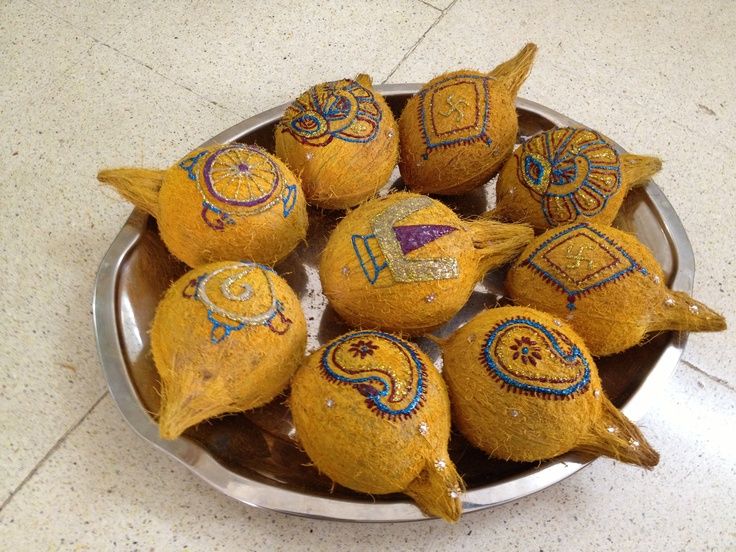Hindu pantheons rely heavily on various rituals widely among individuals, denominations, castes, communities, villages, and regions. What makes Hindu rituals special is that this religion connects Hindus scattered around the world, surprisingly connecting them to a single entity and even affecting other major religions. It is to provide many similar features that give.
Each puja and ritual have its meaning. And marriage is a ritual, a prayer to God, and a blessing of God seeking to start living together again. So, get married, take Sath Pheras around the fire, or follow "Sindoor Dan," "Kanyadan," "Bidai," and "Dulhan Grih Pravesh." Each subsequent ritual has its power to fill the environment with spiritual energy and bring joy to your life.
In addition to the pujas performed and the various rituals, the pooja essentials have their meanings and similarities. Therefore, complete Marriage Vidhi Essentials includes several elements.
Marriage rituals start before so many days of marriage, and various pooja essential taken in use in it, which have their significance. In this blog, we have mentioned some of the pooja essentials for marriage available on our website, and you can shop them from here.
1. Pooja Thali

Pooja Thali
A Pooja Thali, also known as Puja Plate, is a traditional and decorative plate used in Hindu religious ceremonies, rituals, and worship. It serves as a platform to hold various items and essentials required during a pooja or religious ceremony. The Pooja Thali is an integral part of Hindu traditions, and its design and components may vary based on regional customs and personal preferences. Here are the key elements typically found on a Pooja Thali:
Diya or Oil Lamp: A small oil lamp, also known as a diya, is an essential component on the Pooja Thali. It represents the presence of light, dispelling darkness and ignorance. Devotees light the diya to symbolize the illumination of the mind and spirit.
Incense Sticks (Agarbattis): Incense sticks, or agarbattis, are another common feature on the Pooja Thali. They are lit during the pooja to release fragrant smoke, believed to purify the environment and create a spiritually charged atmosphere. The aroma is considered auspicious and conducive to meditation.
Kumkum and Chandan Containers: The Pooja Thali often includes small containers for holding kumkum (vermilion powder) and chandan (sandalwood paste). Kumkum is applied as a tilak on the forehead, symbolizing devotion and auspiciousness. Chandan is used for applying a sacred mark on the deity's idol or the worshipper.
Bell: A small bell is sometimes attached to the Pooja Thali. The sound of the bell is believed to ward off negative energy and attract positive vibrations. It is rung at specific moments during the pooja, marking transitions in the ritual.
Rice or Akshata: A small container with uncooked rice or akshata is often placed on the Pooja Thali. Devotees use this as an offering during specific rituals. The symbolism of rice varies, but it is commonly associated with prosperity and fertility.
Water Container: A small vessel or container for holding holy water is an essential part of the Pooja Thali. This water is used for purification purposes, and devotees may sprinkle it on themselves or use it to consecrate various items during the pooja.
Coconut: In some traditions, a coconut may be included on the Pooja Thali. The coconut is considered a symbol of purity, prosperity, and divine consciousness. It is often offered as a sacred fruit during rituals.
The Pooja Thali, with its beautifully arranged components, creates an aesthetically pleasing and spiritually charged space for worship. It enhances the overall experience of the pooja and is an important cultural artifact in Hindu households and temples. The design and contents of the Pooja Thali may vary, reflecting the diversity of Hindu customs and traditions across different regions.
2. Shubh-Labh Design

Shubh-Labh Design
The term "Shubh Labh" refers to auspicious and profitable outcomes. In the context of traditional Indian culture, particularly during festivals like Diwali, the "Shubh Labh" symbol is a commonly used design that conveys good wishes for prosperity and success. It is often drawn or crafted on the entrance doors or walls of homes and businesses. The design typically comprises two words, "Shubh" (auspicious) and "Labh" (profit), and is often accompanied by intricate patterns and artistic elements. Here are more details about the Shubh Labh design:
Aesthetic Elements: The Shubh Labh design is known for its artistic and decorative elements. It often includes floral patterns, geometric shapes, and sometimes depictions of traditional symbols or motifs. The combination of these elements contributes to the overall visual appeal of the design.
Language and Script: The words "Shubh" and "Labh" are usually written in Devanagari script, which is the script used for several Indian languages, including Hindi and Sanskrit. The script adds a cultural and linguistic aspect to the design.
Materials and Medium: The Shubh Labh design can be created using various materials and mediums. Traditionally, it might be drawn with rangoli (colored powders) during festivals, painted on doors using chalk or traditional paints, or crafted using materials like wood, metal, or even stickers for a more permanent display.
Color Palette: The color palette of the Shubh Labh design can vary, but auspicious and vibrant colors are often chosen. Red, yellow, green, and gold are commonly used to symbolize prosperity, happiness, and positive energy.
Placement: The Shubh Labh design is typically placed at the entrance of homes or business establishments. It is believed to invite positive energy and prosperity into the space. During Diwali, in particular, it is a common tradition to adorn doorways with this auspicious symbol.
Festive Significance: The Shubh Labh design holds special significance during festivals, especially Diwali. Diwali is a Hindu festival that celebrates the triumph of light over darkness and good over evil. The Shubh Labh symbol is considered particularly auspicious during this time, symbolizing the hope for a prosperous and joyous year ahead.
Cultural Variations: While the basic concept of Shubh Labh remains consistent, there might be regional and cultural variations in the design. Different communities and regions may have unique patterns, styles, or additional elements incorporated into the Shubh Labh design based on their cultural practices.
The Shubh Labh design, with its artistic expression and positive symbolism, reflects the cultural ethos of celebrating prosperity, auspiciousness, and well-being in traditional Indian homes and communities
Shubh-labh designs also called Maha Yantra, is a combination of Shree Ganesh Yantra and the Goddess Lakshmi Yantra. This yantra brings siddhi and wealth and is optimistic for pooja. They are usually provided in the form of foot, swastikas, or the words "Shubh," "Labh," and are placed in front of the door at home.
We have Shubh Labh hanging wall hanging designs for you in pooja essentials. Beautiful wall hanging Shubh Labh is a religious term used primarily in Indian homes, shops, office entrances, or Pooja gal. These wall-mounted exhibits are great religious home decorations. It serves as a great gift, especially around religious celebrations and festivals; Crystal's work makes it more beautiful. It is a very beautiful and ethnic craft to add an ethnic taste to your home for poojas.
Shubh Labh design is a traditional sign that warmly welcomes all visitors beyond the threshold of your home. These all shubh labh designs mean luck and auspiciousness. Specifically, these things show goodness and luck. Shubh labh stickers are put at the entrance of all Indian doors. People take in use for Diwali decorations and wedding celebrations, or useful for vast occasions.
3. Decorative Aarti Thali

Decorative Aarti Thali
Aarti Thali is a beautifully decorated plate or tray used in Hindu religious rituals, specifically during the ceremonial worship known as "aarti." The aarti ceremony involves the offering of light to deities, typically using a lit lamp or diya, accompanied by the singing of hymns and the ringing of bells. The Aarti Thali serves as a vessel for various items essential for the aarti ritual. Here are more details about The decorative Aarti Thali:
Materials and Design: Aarti Thalis are crafted from various materials, including metal, wood, or even decorative plastic. They are often adorned with intricate designs, carvings, or embellishments that add to their aesthetic appeal. The materials and designs may vary based on regional traditions and personal preferences.
Compartments and Holders: A typical Aarti Thali features multiple compartments or holders to neatly organize the items used during the aarti. These may include spaces for a diya (lamp), incense sticks (agarbattis), kumkum (vermilion powder), chandan (sandalwood paste), flowers, and even small containers for offerings like rice or sweets.
Central Space for Diya: The central focus of the Aarti Thali is often dedicated to holding the diya or oil lamp. This space is designed to secure the diya in place and prevent any spillage of oil. The diya is an essential element, symbolizing the divine light that dispels darkness.
Decorative Elements: Aarti Thalis are known for their decorative elements, which may include colorful embellishments, sequins, beads, mirrors, or even small artistic figurines. These decorative features not only enhance the aesthetic appeal but also add a sense of festivity and reverence to the ritual.
Handles or Grips: Some Aarti Thalis come equipped with handles or grips, making it easier for the person performing the aarti to hold and maneuver the tray gracefully. These handles are often designed to complement the overall aesthetics of the Thali.
Symbolic Representations: In addition to decorative elements, Aarti Thalis may feature symbolic representations of auspicious symbols or religious motifs. These symbols can vary and may include Om, Swastika, lotus flowers, or depictions of deities, depending on regional customs and beliefs.
Occasions and Festivals: Aarti Thalis are commonly used during various religious occasions, festivals, and family ceremonies. They play a significant role in daily worship as well as during larger celebrations like Diwali, Navratri, and other religious festivals.
Customization: Aarti Thalis can be customized based on personal preferences and the specific requirements of the worshipper. Some families may pass down beautifully crafted Aarti Thalis as heirlooms, adding a touch of tradition and sentiment to their religious practices.
The Aarti Thali, with its intricate design and functionality, adds a touch of reverence and elegance to the ritual of aarti, creating a sacred and visually appealing space for worship in Hindu households and temples.
Awesome Pooja Thali set are beautifully carved art forms available in large quantities from the Lovely. There are also two very beautifully handcrafted Chandi ki Katori available; the most beautiful thing about this set is its plate. The plate is made of high-quality steel with side cuts and design.
The central part of the slab contains all the sacred symbols created. On this decorative aarti thali, the symbols "Ohm," "Shree," "Enlightened Diya," "Swastika" is engraved, and even an incense holder, the mango leaf Kalash, gives this Pooja Thali set a different look. Panchmukhi Diya, Incense Holder, and Puja Bell are some of the beautiful added to this set. It is a very good-looking, affordable item and can be purchased by anyone who knows the value of the Hindu sacred symbol.
4. Decorative Coconut

Decorative Coconut
Decorative coconuts are artistically embellished and ornamented coconuts that serve both aesthetic and symbolic purposes in various cultural and religious contexts. These coconuts are often used as decorative items during festivals, religious ceremonies, weddings, and other auspicious occasions. Here are more details about decorative coconuts:
Symbolic Significance: In many cultures, the coconut holds symbolic importance, representing purity, fertility, and divine blessings. Decorative coconuts are often used to symbolize auspicious beginnings, prosperity, and good fortune.
Decorative Elements: Decorative coconuts are adorned with various decorative elements to enhance their visual appeal. Common embellishments include intricate carvings, colorful paints, beadwork, sequins, and other artistic designs. The decorations may reflect cultural motifs, religious symbols, or specific themes related to the occasion.
Carvings and Engravings: Skilled artisans often carve or engrave intricate patterns and designs onto the surface of the coconut. These carvings can range from religious symbols to traditional patterns, creating a unique and visually striking piece.
Paintings and Colors: Decorative coconuts are often painted with vibrant colors to add to their attractiveness. The choice of colors may be influenced by cultural traditions, religious symbolism, or the theme of the event. Gold and red, for example, are commonly associated with prosperity and good luck.
Religious and Cultural Context: In Hindu rituals, a decorated coconut is frequently used during pujas and religious ceremonies as an offering to deities. The coconut is considered a sacred fruit, symbolizing the three eyes of Lord Shiva and representing the divine trinity. In South Indian weddings, the groom may offer a decorated coconut as a symbol of his commitment.
Wedding Rituals: Decorative coconuts are often incorporated into wedding ceremonies, particularly in South Indian weddings. They may be exchanged between the bride and groom or used as part of rituals symbolizing unity, fertility, and the beginning of a new life together.
Festivals and Celebrations: Decorative coconuts are commonly used during festivals like Navratri, Diwali, and other cultural celebrations. They may be displayed as decorative items in homes, temples, or event spaces, adding a festive touch to the surroundings.
Gifts and Souvenirs: Decorative coconuts are sometimes given as gifts or souvenirs during special occasions. They serve as unique and meaningful tokens, representing blessings, good wishes, and positive energy.
Customization: The design of decorative coconuts can be highly personalized based on individual preferences or the specific requirements of an event. Customization allows for the inclusion of names, dates, or specific themes associated with the occasion.
Decorative coconuts, with their cultural and religious significance, not only contribute to the visual aesthetics of celebrations but also carry deeper symbolic meanings. They play a versatile role in various traditions and are cherished as both decorative items and symbols of blessings and prosperity.
Wedding Nariyal is also kept in pooja or used at weddings, festivals, new cars, bridges, and homes. Then, coconut is broken and placed in front of the Lord. Since then, coconut has been a symbol of victims. Therefore, in every auspicious business or ceremonial, people offer coconut at the lotus feet of God.
"Nariyal" or coconut signifies a symbol of good luck and prosperity in Indian culture. The bride gives Naryal to the groom, which is very important at the wedding. Buy Shagun Decorative Nariyal embellished with colorful designs, beads, and threads.
Coconut is called Shripala or "Fruit of God" in Sanskrit. Coconut is the only fruit used to symbolize "God." In Hinduism, coconut is one of the most common offerings in temples. And it also plays an important role in all denominations. Coconut is the fruit of Satvic, sacred, pure, and healthy, with various properties. When someone purchases a new car or new home, this Nariyal is also offered.
Also, people offer it in the fire as a sacrifice while doing Havan. Then, Nariyal is broken and placed before God, and after doing rituals, it is distributed as Prasada. You can keep decorative coconut in poojas or in your mandir at home.





